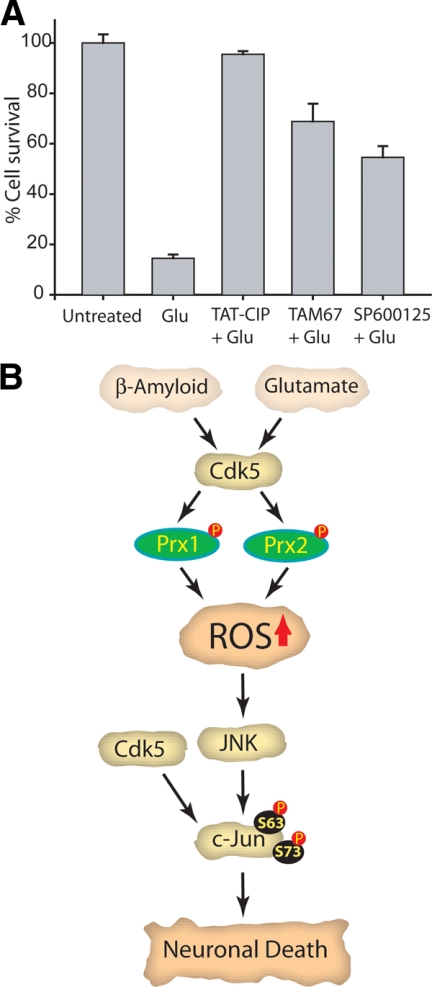Figure 7.
Role of Cdk5 in regulating the JNK cascade in neurons upon neurotoxic insults. (A) Inhibition of Cdk5 or c-Jun activity confers higher degree of neuroprotection compared with JNK inhibition. Inhibition of Cdk5, JNK, or c-Jun was performed in HT22 cells as described in Materials and Methods, followed by 5 mM glutamate stimulation. After an additional 24-h incubation, cell viability was analyzed by MTT assay. This assay was conducted three independent times. Representative results are shown. (B) Proposed model of Cdk5 in regulation of the JNK cascade. Cdk5 regulates JNK pathway both directly and indirectly. Yellow squares highlight three therapeutic targets in AD. Inhibition/ablation of any of these targets confers neuroprotection from neurotoxic signals in neuronal cells. Cdk5 deregulation increases oxidative stress via inactivation of two antioxidant enzymes, Prx1 and Prx2, which lead to ROS-mediated JNK and c-Jun activation. In addition, deregulated Cdk5 also directly phosphorylates c-Jun, suggesting that Cdk5 inhibition is expected to be more neuroprotective than JNK or c-Jun in AD. Cdk5 in yellow square denotes deregulated Cdk5.

